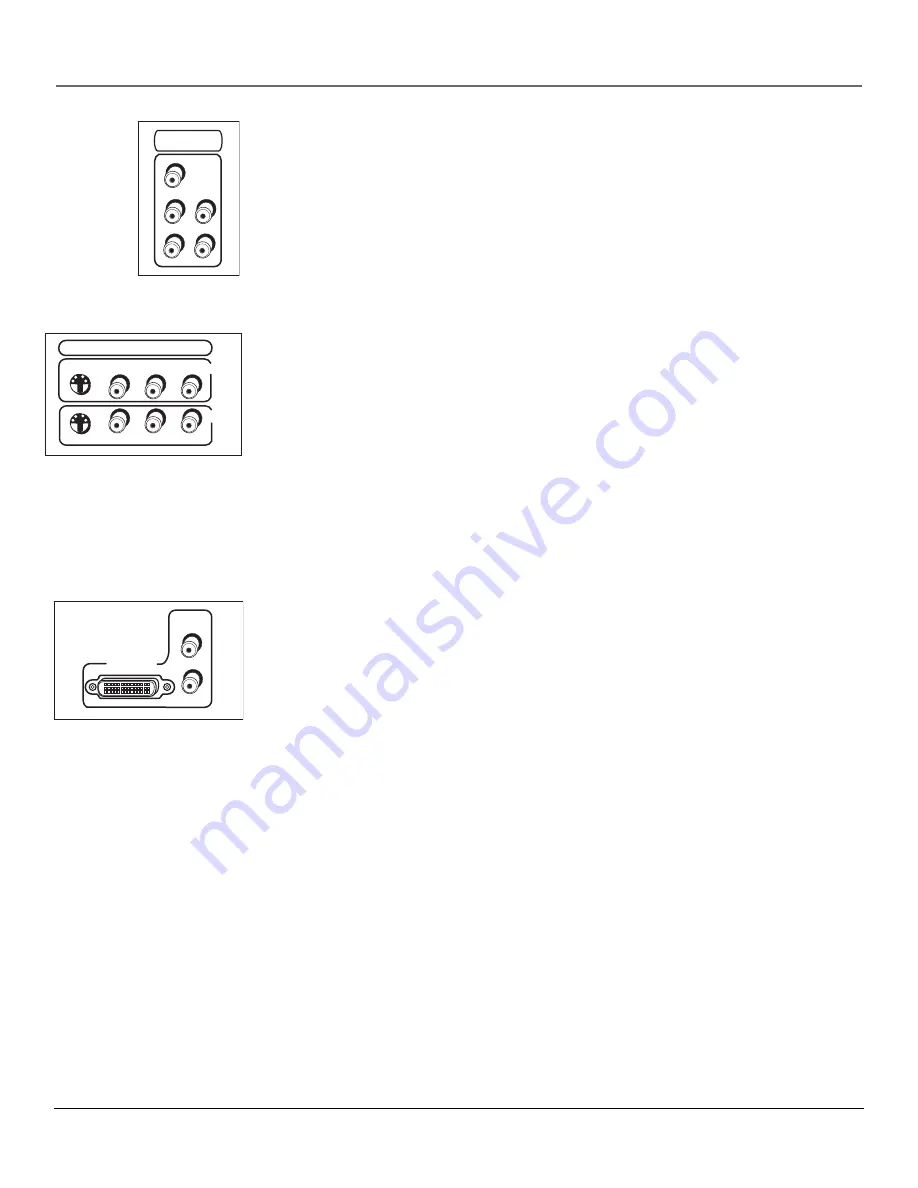
Connections & Setup
Chapter 1
11
COMPONENT INPUT
Lets you connect a component video source, such as a DVD player.
•
CMP1 Y P
B
P
R
(Component Video)
Provides optimum picture quality because the
video is separated into three signals. Use three video-grade cables for the connection.
When using CMP1 Y P
B
P
R
, make sure to connect left and right audio cables to the
CMP1 L and R Audio Input jacks.
•
CMP1 L (Audio)
Provides left audio connection. The left audio connector is usually
white.
•
CMP1 R (Audio)
Provides right audio connection. The right audio connector is usually
red.
COMPOSITE INPUTS
Lets you connect another component such as a VCR or DVD player.
Its AUDIO jacks are the same as described for CMP1 above.
•
VID1 S-VIDEO
Provides better picture quality than the video jacks (VID1 and 2 Video)
because the color part of the picture is separated from the black and white part of the
picture. When using VID1 S-VIDEO, make sure to connect left and right audio cables to
the VID1 L/MONO and R Audio Input jacks.
•
VID1 V (Video)
Provides composite video connection. The video connector is usually
yellow.
•
VID2 S-VIDEO, V and L/MONO and R Audio
Allows you to connect a component
such as a VCR or DVD player. Their description is the same as VID1 above.
Note:
For each VID jack group (VID1 and VID2), you may connect either an S-Video or
Video cable. Do not connect both at the same time in either of the VID jack groups.
DVI- HDTV Input
Lets you connect a component with a DVI output.
Important:
The DVI-HDTV input is not intended for use with a computer.
•
DVI (Digital Visual Interface)
Provides an uncompressed, digital video interface
developed for high-bandwidth digital connection. It supports the overlay of high-
resolution graphics needed by some electronic program guide navigation and other
interactive services. DVI, when combined with HDCP (High bandwidth Digital
Content Protection) technology, creates a protected digital connection. The DVI-HDTV
connection is designed to display either progressive scan (480p) or HDTV (1080i)
signals at a bandwidth of up to 1.78 Gigabits per second.
•
L (Audio)
Provides left audio connection when using the DVI jack. The left audio
connector is usually white.
•
R (Audio)
Provides right audio connection when using the DVI jack. The right audio
connector is usually red.
Note:
Remember to connect the left and right audio cables because the DVI cable
carries only the picture signal, not the sound.
DVI-HDTV
R
L
P
R
CMP1
COMPONENT
INPUT
Y
L
R
P
B
VID1
VID2
COMPOSITE INPUTS
S-VIDEO
V
R
L
V
R
L





































